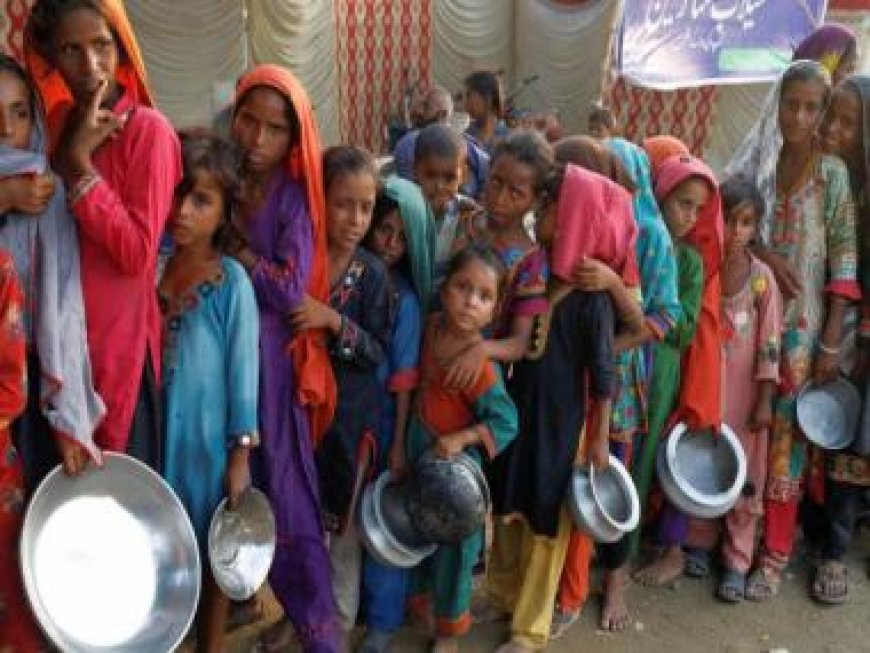More people can't afford nutritious food; 148 million children are stunted by hunger, UN says
More people can't afford nutritious food; 148 million children are stunted by hunger, UN says

On Wednesday, the United Nations provided dismal news on global food security: Last year, 2.4 billion people did not have consistent access to food, 783 million were hungry, and 148 million children experienced stunted growth.
According to the 2023 State of Food Security and Nutrition report from five UN agencies, while worldwide hunger levels remained stable between 2021 and 2022, many countries are suffering worsening food crises. They cited Western Asia, the Caribbean, and Africa, where 20 per cent of the continent’s population is hungry, more than double the world average.
“Recovery from the global pandemic has been uneven, and the war in Ukraine has affected nutritious food and healthy diets,” Qu Dongyu, director-general of the Food and Agriculture Organization said in a statement. “This is the `new normal’ where climate change, conflict, and economic instability are pushing those on the margins even further from safety.”
The FAO food price index has been dropping for nearly 15 months, according to FAO head economist Maximo Torero, but “food inflation has continued.” However, he stated that without knowing if the agreement that has allowed Ukraine to transport 32 metric tonnes of grain to global markets and is attempting to overcome impediments to Russian grain and fertiliser imports would be extended when it ends on July 17 “is not good for the markets.”
If it is not extended quickly, “you will have a new spike for sure” in food costs, he added, but how much and how long it would last depends on how markets react.
People’s access to nutritious foods has declined globally, according to the research.
More than 3.1 billion people – 42 per cent of the global population – were unable to afford a healthy diet in 2021, an increase of 134 million people compared to 2019, it said.
Torero told a news conference launching the report that reducing the number of people eating unhealthy diets “is a big challenge, because it’s basically telling us that we have substantially to change the way we use our resources in the agricultural sector, in the agri-food system.”
According to the latest research, he said, between 691 million and 783 million people were chronically undernourished in 2022, an average of 735 million which is 122 million more people than in 2019 before the COVID-19 pandemic began.
Torero said UN projections for 2030 indicate that 600 million people will still be suffering from chronic undernourishment in 2030, far from the UN development goal of achieving “Zero Hunger” by that date.
In the report’s foreword, the heads of FAO, the World Food Program, the International Fund for Agricultural Development, the UN children’s agency UNICEF and the World Health Organization wrote that achieving Zero Hunger “poses a daunting challenge.” They called for redoubled efforts “to transform agri-food systems and leverage them” to reach the target.
As for children, the report says they are continuing to suffer from malnutrition, with not only 148 million younger than 5 stunted but 45 million too thin for their height or “wasted,” while 37 million youngsters were overweight.
Torero said the five agencies also looked at increased urbanization and found that people in rural and semi-urban areas are also consuming mass-market products.
“Normally, we used to believe that rural people will consume what they produce, but that’s not the case,” he said, explaining that in rural areas about 30 per cent of the family’s food basket is purchased from the market, and in semi-urban and urban areas it is higher, which has implications for nutrition because of the consumption of more processed foods.
WFP chief economist Arif Husain told reporters in a virtual briefing that in 2022 when the war in Ukraine was ongoing the food situation didn’t get worse because the donor community stepped up with about $14.2 billion, and the agency was able to provide aid to 160 million people, up from 97 million in 2019.
“My concern is that moving forward we are looking at huge funding cuts,” he said, citing WFP donations of just $4.2 billion by last week, 29 per cent lower than at the same time last year.
What's Your Reaction?



























































